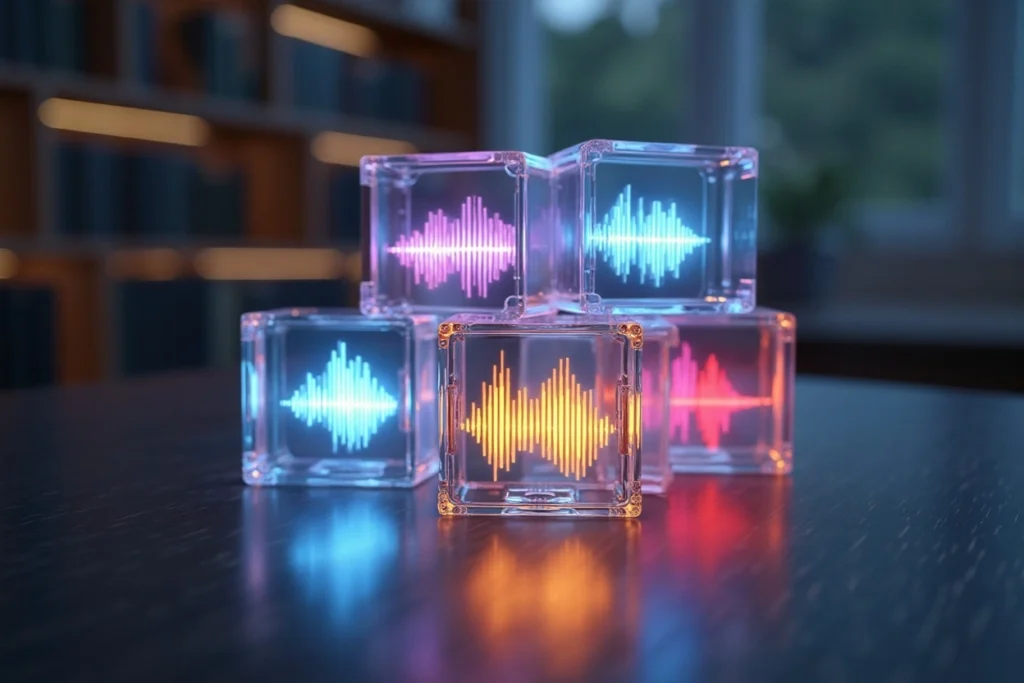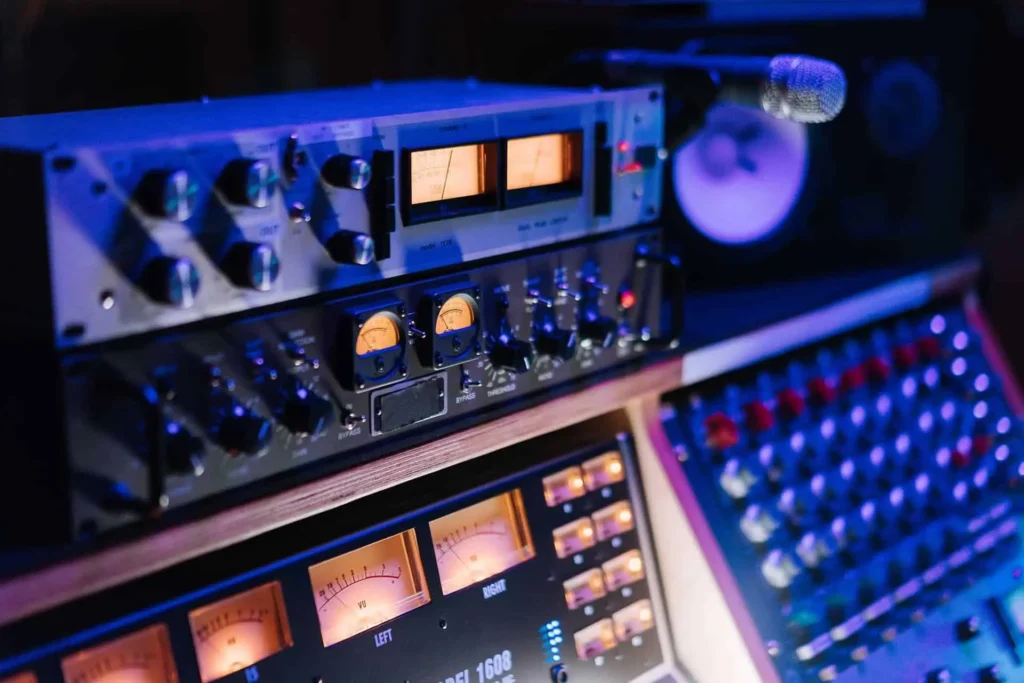Without a deployment strategy, a sound identity is not enough on its own. Even if it’s well thought out and well produced, it will only have an impact if it’s properly deployed.
The work doesn’t stop at creation. It really starts when you have to structure, distribute and anchor your brand’s sound universe at all your points of contact.
In this article, we guide you through the essential steps for successfully deploying a sound identity.
The aim: consistency, effectiveness and recognition.

Creating a coherent audio territory: the basics of audio identity
Before your voice can be heard, you need to know what it’s saying and how it’s saying it. Here are the foundations of a coherent audio territory.
The sound charter: more than just a jingle
A sound identity is not just a sound signature. It’s a whole audio territory, like a graphic charter, but for the ears.
Differentiating between sound identity, sound logo and variations
This charter can include :
- The sound signature (sound logo or jingle)
- Sound identity (brand music or sound DNA)
- Specific adaptations for digital, your podcasts and your events
- Adaptations for telephony
We talk about it in this article!
A well-defined sound territory allows all your teams to speak a common musical language. It avoids tinkering and inconsistencies.
A single misplaced sound can blur your entire brand image.

Mapping your audio contact points
Every interaction between your brand and your audience is an audio opportunity.
Identify all audio distribution channels
Before broadcasting your audio identity, identify where your brand expresses itself through sound. These are your audio contact points.
Here are a few examples:
- TV and radio advertising
- Digital videos, motion design
- Social networks
- Brand podcasts
- Shops, showrooms
- Telephony (on-hold, answering machine)
- Apps and user interfaces
- Events and product reveals
Adapting sound design to suit the medium
Each channel has its own specific characteristics. The same music doesn’t work everywhere.
You have to adapt without distorting. Keep the same sound DNA, but vary the packaging. This is where brand sound design comes into its own.
Building an operational sound library
Here’s how to create a really useful sound library.
Ready-to-use formats for all your content
A well thought-out sound territory is good. A ready-to-use sound library is even better.
The idea is to create operational formats that can be used immediately:
- loops for videos (15s, 30s, 60s)
- background music for social networks
- intros and outros for podcasts
- short jingles for advertising
- notification sounds for mobile apps
Organisation and accessibility for teams
These variations must be easy for your teams and partners (agencies, editors, producers) to integrate.
Classify them by theme, use and duration. Provide a complete kit in a shared folder, with a clear nomenclature.
Your sound identity then becomes a reflex, not a constraint.

Involve your teams and partners in your audio strategy
A successful audio strategy is also about collaboration. Here’s how to involve your teams and partners in the audio adventure.
Train, explain and appoint an audio coordinator
Your audio identity needs to live on a daily basis. To achieve this, all the parties involved need to get to grips with it.
- Train your internal teams: marketing, communications, HR, digital, etc.
- Explain the rules of the sound charter.
- Give concrete examples of successful use.
If you can, appoint an in-house audio branding referent. He or she will ensure that the charter is properly applied and will be able to validate productions.
Guarantee unity of execution
Don’t forget your service providers: digital agencies, video editors, production studios.
They need to integrate your sound universe into their creative processes. Above all, they need to understand the spirit of your brand in music.
Before validating everything, test it! Both in-house and with your audience. Does the sound evoke the right emotions? Is it identifiable? Memorable?
Measuring the impact of your sound identity
Creating an audio identity is one thing. Proving its effectiveness is quite another.
Tracking the right KPIs
Like any branding tool, your audio identity needs to be monitored and optimised.
Here are some useful KPIs:
- Spontaneous recognition rate (consumer tests)
- Perceived consistency between image and sound
- Engagement with your video content
- Listening time for your podcasts
- Point-of-sale feedback
Schedule regular audits of your audio messages. Listen again to your adverts, videos and podcasts.
Is your sound territory respected? Is it still in line with your positioning? Does it stand out in your sector?
Adjust your sound strategy over time
Don’t hesitate to change certain elements. A sound territory is not set in stone. It grows with your brand.
Conclusion: sound is no longer a detail!
A sound strategy cannot be improvised. Once created, your sound identity needs to be structured, adapted and activated.
This is the only way to turn it into a real lever for brand awareness and consistency.
At Brandy Sound, we believe that sound is a strategic asset, not just an afterthought.
We work with brands to ensure that their sound identity lives on across all media, without ever losing its meaning.
Because in a world saturated with messages, it’s not the most visible that win.
It’s the ones we hear… and recognise.
Shall we talk about it together?
Things to remember
-
A sound identity without a deployment strategy is like a poster without a visual: invisible.
-
For your brand to resonate everywhere, your sound territory must adapt to each point of contact, without ever losing its DNA.
-
Sound becomes a real brand lever when it is conceived as a strategic tool, not an accessory.
To find out more
We are a creative agency specialising in sound identity and audio branding. We design unique sound worlds for brands, reinforcing their emotional impact and recognition.
See our case studies

